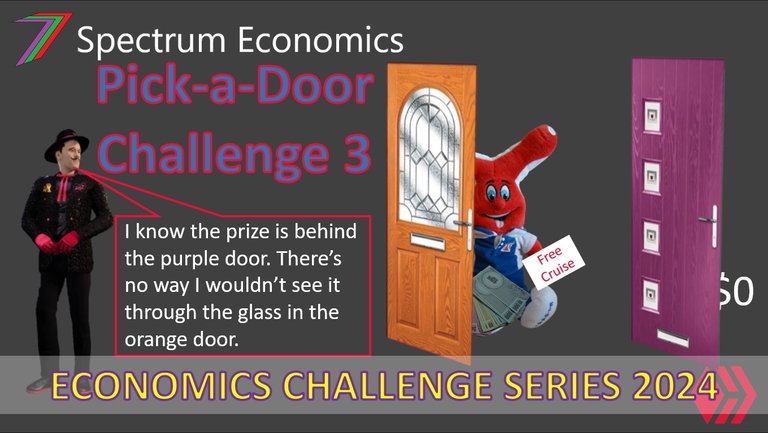Hi Everyone,

Welcome to the Economics Challenge Series for 2024. For July and August, I am running an economics challenge series. The series consists of seven challenges. All the challenges will commence in July and early August. I will publish and announce the results in August.
Six of the seven challenges from last year's Challenge Series are returning. The Tax Game from 2022 is replacing the business version of the Buying and Selling Game. Below is the list of challenges.
- Challenge 1: Ice Cream Game
- Challenge 2: Game Theory Game
- Challenge 3: Pick-a-Door
- Challenge 4: Complement vs. Substitute
- Challenge 5: The Buying and Selling Game
- Challenge 6: Even-to-Win
- Challenge 7: Tax Game
Each challenge could reward winners with as much as 60 Hive Power. The value of the prize will depend on the level of participation. For each new participant, the prize will increase by 5 Hive Power. This will continue until 60 Hive Power is reached (12 participants). The first 12 participants will also receive a 50% upvote from this account.
In addition to the prize money, the top few participants will be given points. These points will be used to determine the overall challenge series winner. This winner may receive as much as 80 Hive Power. The value of the prize will equal the sum of the number of participants across all challenges. This will continue until 80 Hive Power is reached.
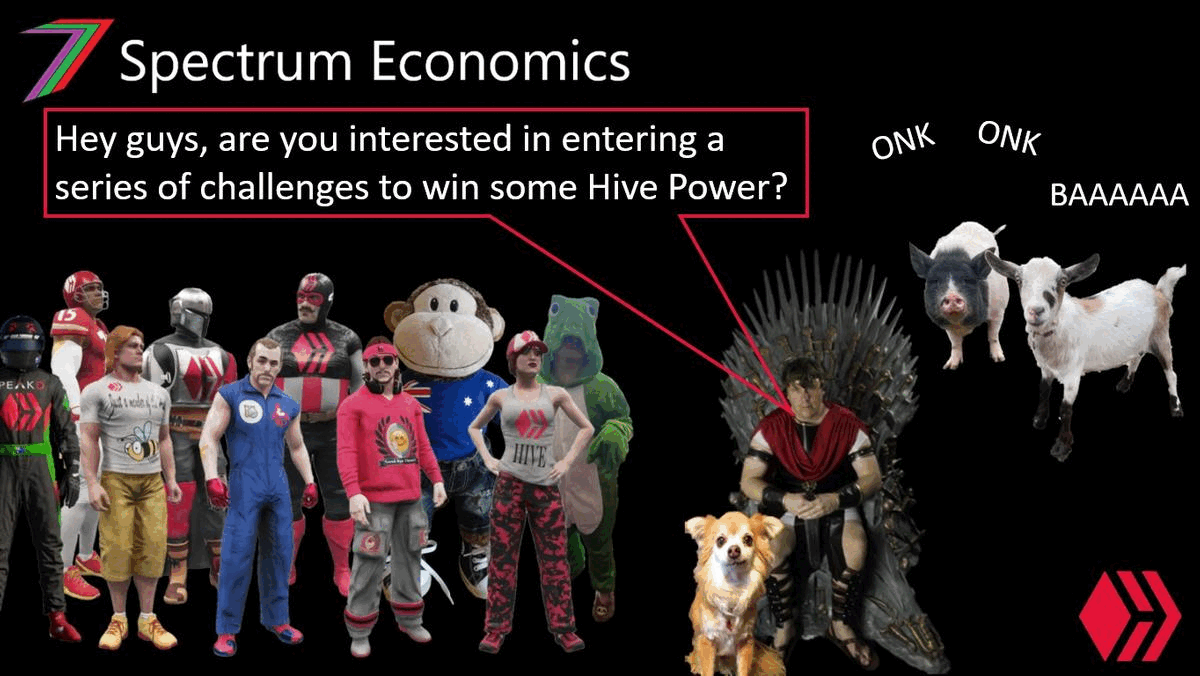
For more information on the challenge series, I recommend that you read my post from last year. This year’s Challenge Series is run the same way as last year’s.
Results
Welcome to the results post for the Pick-a-Door Challenge. This post contains the results as well as how they were generated using a Microsoft Excel model.
Winner Determined in this Video?
What is the Pick-a-Door Challenge?
For the benefit of those who did not enter this challenge, here is a brief explanation of how the game works.
In this challenge, participants were required to make decisions based on expected payoff and risk. Participants were presented with 12 doors. Behind each door there could be a prize (expressed in dollars). Each door had a possible prize worth a different amount. As the value increased, the probability of the prize being behind the door decreased. For example, Door 3 had an 84% chance of a prize worth $35, and Door 7 had a 50% chance of a prize worth $90. If the prize is not there, the participant will receive a value of zero.
Opening a door cost $20; each participant was given a budget of $80. Therefore, each participant could open as many as 4 of the 12 doors. Participants were not compelled to use all of the budget. If a participant opens 2 or more doors that have zero value behind them, they are eliminated from the challenge. If not eliminated, the winner is the participant with the highest total value expressed in dollars (i.e., combined value of prizes minus cost of opening doors).
Responses to the challenge were made in the comments section of the challenge post. If several participants make the same profit, the person who entered (i.e., commented) first wins. The total prize for this challenge is equivalent to 5 times the number of participants (e.g., if the challenge has 8 participants, the prize will be 40 Hive Power (5 × 8)). The maximum prize for this challenge is 60 Hive Power. The winner receives 2/3 of the prize, and second place receives 1/3 of the prize. In addition to the winning prize, the first 12 entries are given upvotes.
The format of the required entry is explained in detail in the challenge itself.
For a more detailed explanation, you can access the challenge post using the following link.
Results of the Pick-a-Door Challenge
Table 1 contains the participants and the doors they selected.
Table 1: Doors Selected by Participants
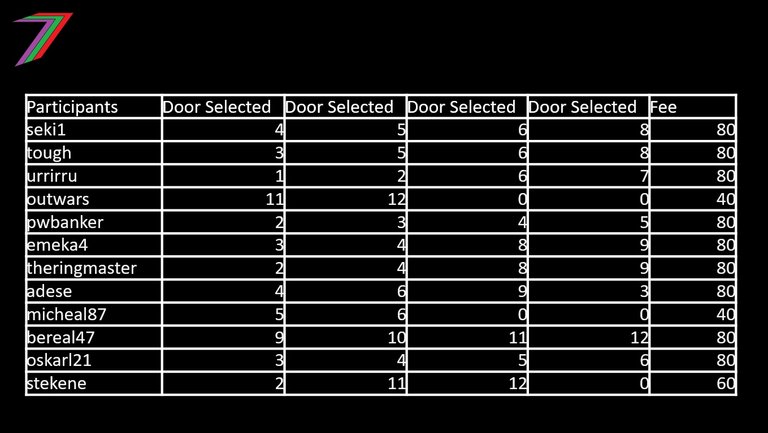
Table 2 contains the potential prizes behind each door, the probability that the prize will be there, and the actual prize based on the Excel Model.
Table 2: Prizes Behind Each Door
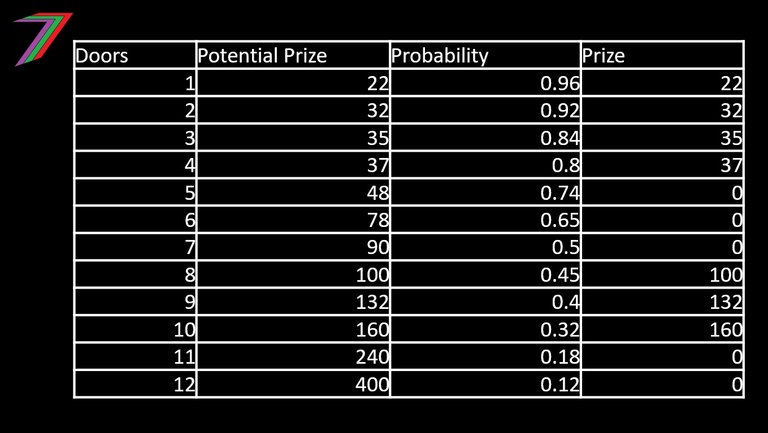
Table 3 contains the prizes each participant won, the total value of prizes, the criterion of no more than one door with a value of zero (eliminated participant’s totals are in red font), and the Challenge winner (highlighted in red).
Table 3: Challenge Winner
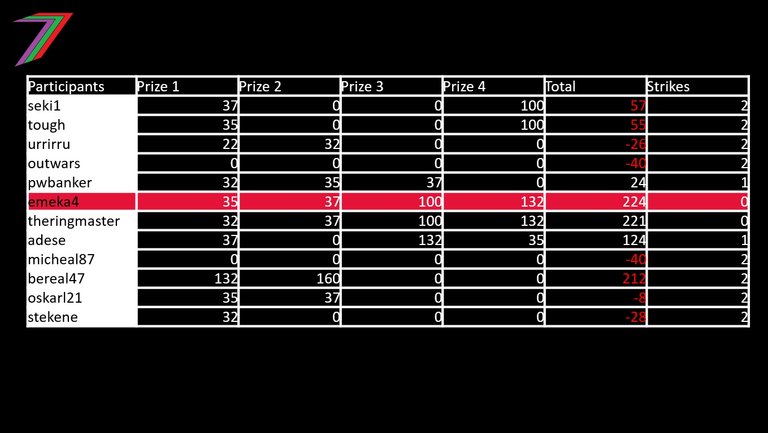
Out of the 12 participants who entered, 8 were eliminated for opening more than one door with a zero value. Of the remaining 4 participants, @emeka4 obtained the highest total value. This amounted to $224. All four doors opened had a positive value. This included doors with high values, such as 8 and 9. @emeka4 wins 40 Hive and 40 points. In second place is @theringmaster, who also selected four doors with positive values and managed to accumulate a total value of $221. @theringmaster wins 20 Hive and 15 points. In third place is @adese with an accumulated value of $124 and is awarded 5 points.
None of the participants managed to open the combination of doors that would have achieved the highest possible total. This combination would have been Doors 4, 8, 9, and 10. This would have accumulated a total prize worth $349. Both @emeka4 and @theringmaster were just one box away from obtaining this combination. The winning participants did very well. Selecting the optimal combination would have involved considerable luck.
Overall Series Score
After three challenges, the overall scores for the Challenge Series are as follows:
| Position | Participants | Points |
|---|---|---|
| 1 | Emeka4 | 70 |
| 2 | Urrirru | 35 |
| 3 | Bereal | 15 |
| 4 | Theringmaster | 15 |
| 5 | Micheal87 | 10 |
| 6 | Adese | 5 |
This table will be updated in every results post.
Challenge Tips and Analysis
This challenge relies very heavily on luck. Any of the doors could have prizes behind them. As more participants enter, the results depend even more greatly on luck. Even so, a good strategy could increase your chances of winning. It helps if participants have a good idea of the number of participants entering and the choices they have made. Therefore, entering late offers an advantage in that aspect. For example, if only two participants have entered. Participant 1 has decided to open only Door 1 and Participant 2 to only open Door 12. At this point, Participant 1 has an 84.48% chance of winning, Participant 2 only has a 12% chance of winning, and there is a 3.52% chance they will tie.
Participant 3 could choose to open just Door 2, 3, 4, 5, 6 or 7 to have a better chance of winning than either Participant 1 or 2. If Participant 3 knows no other participant will enter, opening Door 2 is the best option. Participant 3 would have over an 80% chance of winning, Participant 1 would only have around a 7% chance of winning (a very big drop), and Participant 2 would still have a 12% chance of winning. There would be less than a 1% chance of a tie. As more participants enter, the chances of winning from selecting high percentage low payout options decrease significantly. Low percentage high payout options may fall, but by a lower percentage.
For this challenge, there were a reasonably high number of participants (12). Selecting high payout options with maybe one low payout option would have been a good strategy. However, the rule of not opening more than one door without a prize increases the risk of selecting high payout options. This risk can be mitigated by selecting to open only three doors instead of four. For example, just opening Doors 4, 9, and 10. This would have obtained a score of 269. In this challenge, that participant would have won.
My New Book, Sapien Loop

I have published an ebook on Amazon; it is titled ‘Sapien Loop: End of an Era’. The book is fiction. I do not normally write fiction. However, I felt it was appropriate considering what is happening in the world today. Freedom is the most important thing we have, but we are gradually losing it. I have covered this in many of my posts.
In the story, most citizens do not understand the concept of freedom because they have never really experienced it. In essence, the story is about an alien world that might represent our not-so-distant future. There are many other elements to the story that are an abstract and exaggerated version of our reality. I believe this book to be an important read, and I believe it has the potential to change the way you think.
Brief Summary of Sapien Lopp
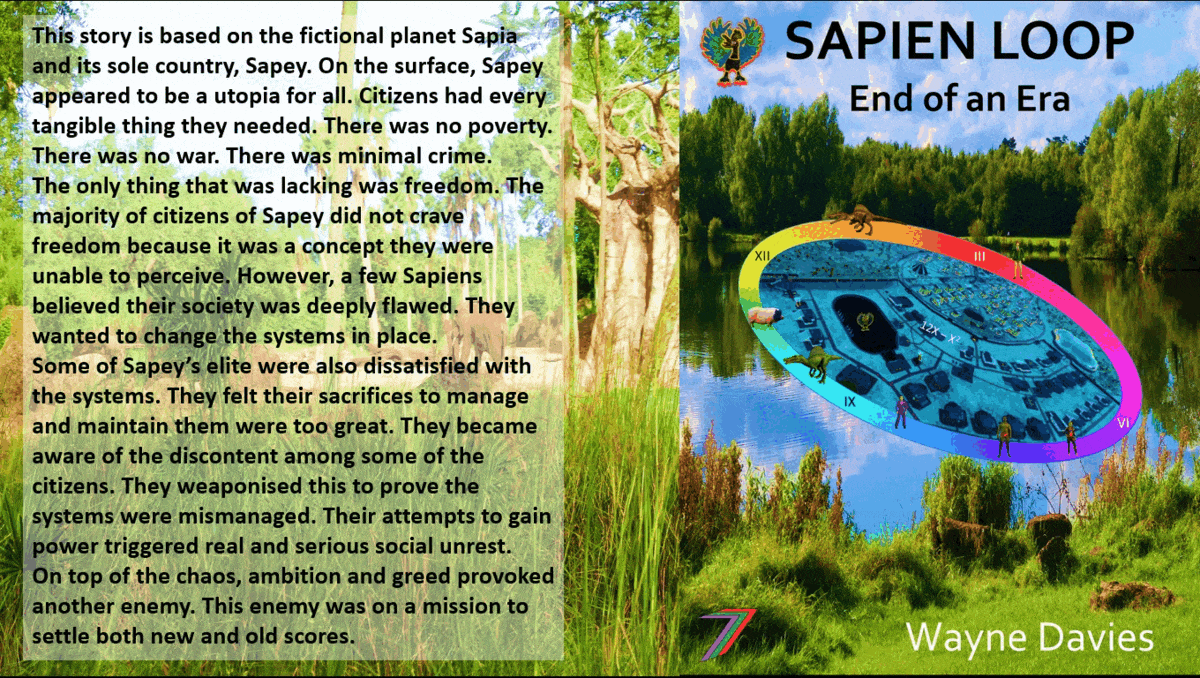
This story is based on the fictional planet Sapia and its sole country, Sapey. Sapey is portrayed as a form of utopia for all its citizens. No poverty. No war. Almost no crime. Opportunities for all.
This was enough for most citizens, but not all. In one of the small regions, some of the citizens had become discontent. They felt something important was missing in their lives. Their discontent did not go unnoticed. Some of the Sapey elite wanted to weaponise this discontent to gain more power. This created more chaos than they anticipated. This led to further widespread social unrest.
On top of the chaos, ambition and greed provoked another enemy. This enemy was on a mission to settle both new and old scores.
If you want to buy a copy of the book, below are links to the relevant Amazon websites for each country it is available in. The book is priced at approximately US$5.08.
- Amazon USA
- Amazon UK
- Amazon Germany
- Amazon France
- Amazon Spain
- Amazon Italy
- Amazon Netherlands
- Amazon Japan
- Amazon Brazil
- Amazon Canada
- Amazon Mexico
- Amazon Australia
- Amazon India
I am also running monthly contests where participants are required to answer questions based on the book. The prize is 30 Hive Power plus upvotes for the first twelve entries. You can recover the cost of the book with just one win.
Hive: Future of Social Media

Spectrumecons on the Hive Blockchain

▶️ 3Speak
